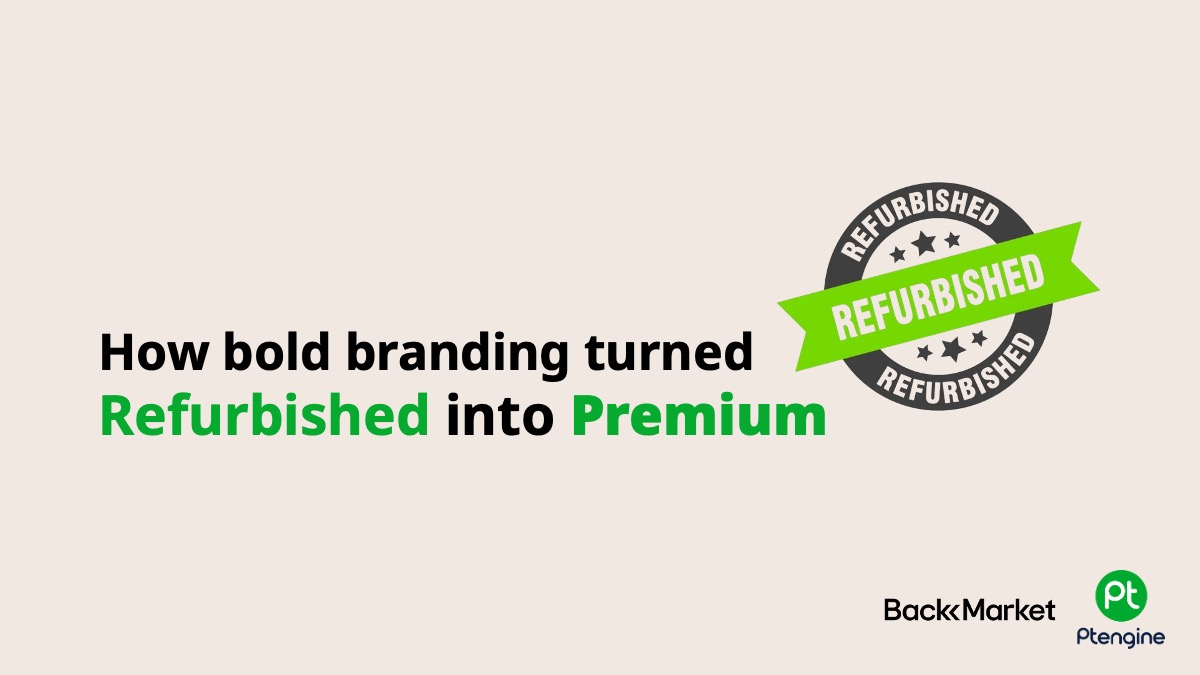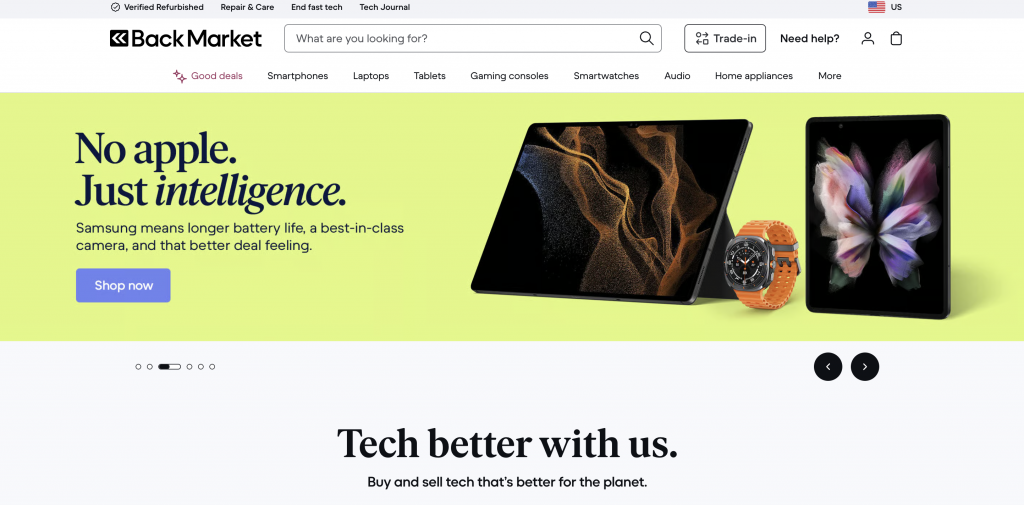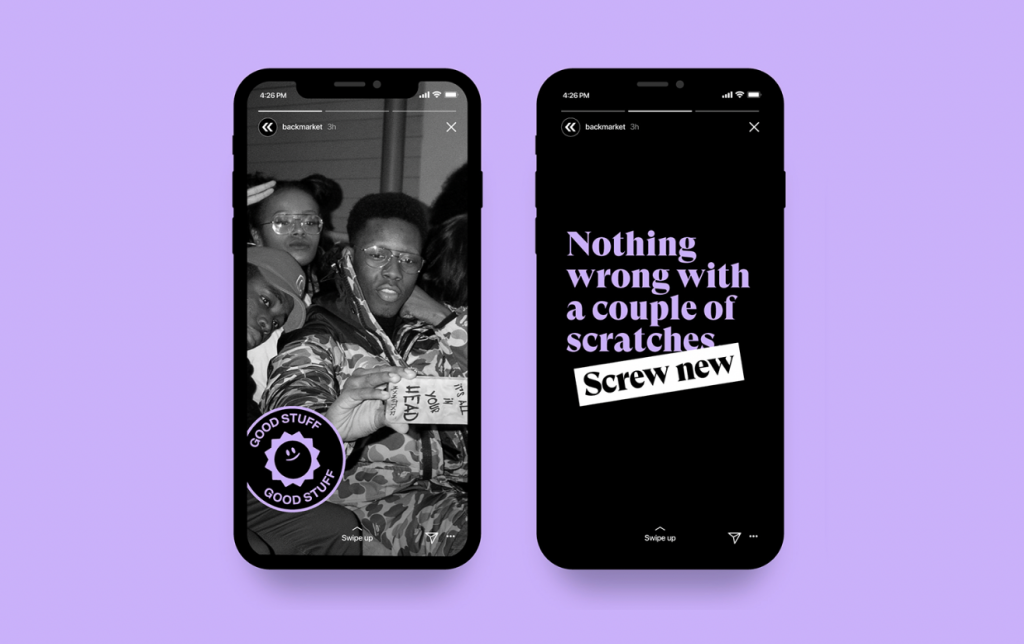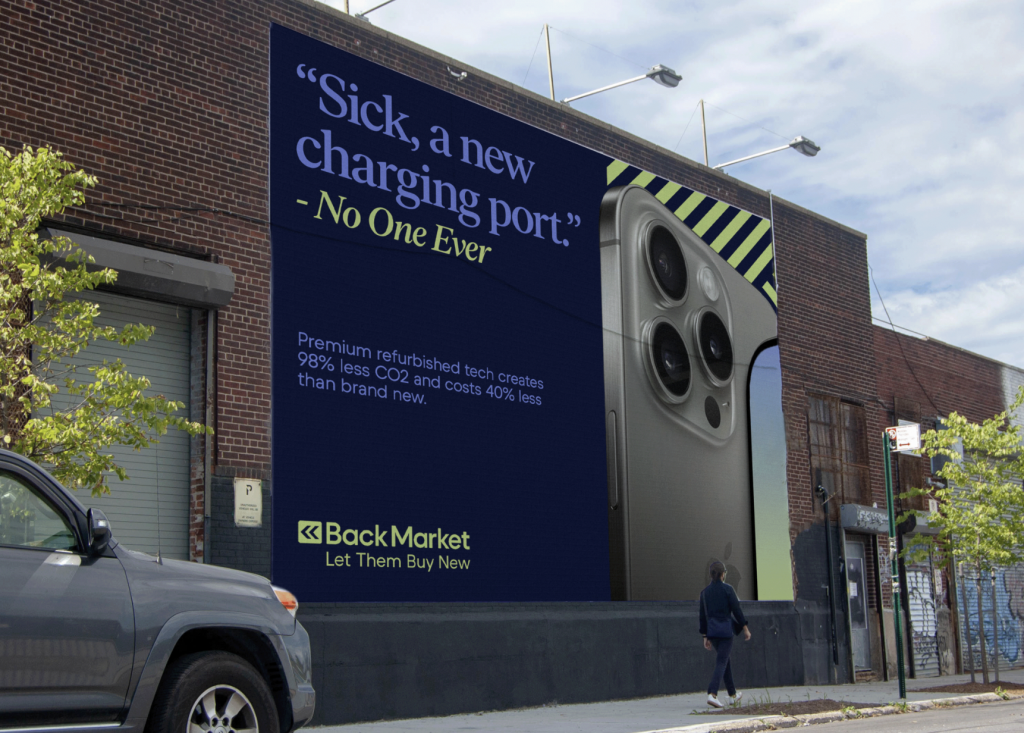blog»Business Strategy»From Niche to Global: The Back Market Marketing Strategy Explained

From Niche to Global: The Back Market Marketing Strategy Explained
2025/06/17
You can read this article in about 14 minutes
Introduction
Back Market isn’t your typical tech e-commerce brand.
While most companies chase the latest product launches, Back Market has built a thriving business by promoting something very different: refurbished electronics.
What started as a niche marketplace in France is now a global brand operating in over 15 countries. Its success hasn’t just come from great pricing or solid logistics. It’s come from brilliant marketing that repositions secondhand tech as smart, sustainable, and cool.

In this article, we’ll break down the Back Market marketing strategy that helped the brand scale fast, challenge consumer habits, and build trust in a category many shoppers were once hesitant about.
From bold campaigns and rebellious branding to smart education and localization, here’s what marketers can learn from one of e-commerce’s most surprising success stories.
1. Positioning refurbished as premium (not second-best)
Back Market didn’t just sell refurbished tech. They rebranded the entire idea of it.
Most shoppers used to see secondhand electronics as risky or second-rate. Back Market set out to change that by making refurbished feel smart, reliable, and even aspirational. Instead of presenting their products as a compromise, they positioned them as the better choice, for your wallet and the planet.
Their tone of voice played a big role. Confident, witty messaging like “Stupidly good tech” or “Hello, tech that’s good as new (only better)” helped reshape the story. It made refurbished feel modern, intentional, and even cool.

Visually, they backed it up. Clean product pages, trust signals like “verified seller” and “1-year warranty,” and impact stats like “X kg of e-waste avoided” build credibility from the moment a user lands on the site.
This wasn’t bargain-bin branding. It was premium positioning with purpose.
What marketers can learn:
- Reframing your category can unlock an entirely new audience
- A confident tone builds trust faster than defensive copy ever will
- Visual trust signals and strong UX can elevate perception instantly
2. Brand built on bold, anti-consumption messaging
While most tech retailers push for faster upgrades and newer devices, Back Market took the opposite approach. Their marketing directly challenges overconsumption and disposable tech culture.
Campaigns like “Fck New”* and “Tech Reformed” didn’t shy away from controversy. Instead, they leaned into it. Back Market positioned itself as the rebellious voice of reason in a market obsessed with newness. They didn’t just sell refurbished devices. They sold a smarter way to buy tech—and weren’t afraid to call out the industry for its waste.

The brand also makes strong statements around cultural moments. On Black Friday, instead of offering discounts, they run anti-Black Friday campaigns that highlight the environmental cost of mindless shopping. They don’t ask you to buy more. They ask you to think differently.
This isn’t just edgy branding for attention. It’s rooted in a clear mission, and that clarity resonates with a growing segment of consumers who care about sustainability but still want great products.
What marketers can learn:
- Taking a clear stand can be more powerful than trying to please everyone
- Consistent messaging tied to a mission builds real loyalty
- Challenging industry norms is a fast way to cut through noise
3. Educational marketing that reduces buyer hesitation
Back Market knew that refurbished tech came with a trust problem. People worried about quality, warranties, and whether the savings were worth the risk. Instead of ignoring those concerns, they tackled them head-on.
Their website is built around education. Every product page clearly explains what “refurbished” means and what condition the buyer can expect. Badges like “certified partner,” “12-month warranty,” and “30-day return” appear next to every listing to remove friction during the buying process.

They also use content strategically. From FAQs to blog posts to repair tutorials, Back Market turns questions into trust-building opportunities. They don’t just sell phones and laptops—they explain why refurbished is a better choice and how the process works behind the scenes.
This content doesn’t just improve conversions. It also reinforces their brand as helpful, honest, and mission-driven.
What marketers can learn:
- Education builds confidence, especially for unfamiliar products
- Great content answers real questions before a customer even asks
- Trust grows when information is clear, consistent, and easy to find
4. Localization with a global voice
As Back Market expanded across Europe and into the United States, it faced a common challenge. How do you grow globally without losing the brand personality that made you stand out in the first place?
Their answer was to localize content, not identity.

Back Market adapts campaigns, messaging, and even humor to fit each market, but the core voice stays the same. Whether you’re in Paris, Berlin, or New York, the tone remains bold, playful, and mission-driven. Product pages are translated, local payment methods are integrated, and shipping and warranty options are tailored by region. But the values and visual identity are consistent everywhere.
This balance between central brand and local relevance allows Back Market to scale fast without becoming generic.
What marketers can learn:
- You don’t have to sacrifice brand voice to go global
- Localizing content and logistics builds trust in new markets
- Consistency in tone helps customers recognize and remember your brand across borders
5. Partnerships, platforms, and SEO
Back Market doesn’t just rely on brand campaigns to drive traffic. They’ve built a strong foundation using performance marketing, platform visibility, and search.
Their SEO strategy focuses on high-intent, product-specific queries like “refurbished iPhone 12 with warranty” or “cheap MacBook Pro certified.” These long-tail keywords attract shoppers who are ready to buy but still need reassurance. Product and category pages are structured to surface in both organic and paid search results, with content that answers key concerns directly.
Back Market also invests in presence across trusted platforms. You’ll find them on marketplaces, product comparison engines, and review platforms like Trustpilot. This expands reach and provides additional social proof for skeptical buyers.

Influencer partnerships are another smart layer. Instead of big-name endorsements, they often collaborate with creators who align with their mission—tech reviewers, sustainability advocates, and everyday users who show off the quality of refurbished devices.
What marketers can learn:
- Focus on search terms that match buyer intent, not just volume
- Be visible where people research and compare, not just where they buy
- Partner with creators who add credibility, not just reach
6. Real-world campaign: “Let Them Buy New”
One of Back Market’s most successful marketing moments came in 2023 with their bold and clever campaign, “Let Them Buy New.”
Timed to coincide with Apple’s annual iPhone launch, the campaign started with mysterious “leaked” documents and locked black boxes sent to influencers and media outlets in major cities. Billboards popped up in New York, Paris, Madrid, and London with cryptic messaging and teaser visuals. The entire effort was designed to mimic the buildup to a major tech product release.

Then came the reveal. The boxes and ads weren’t promoting a new phone, they were announcing refurbished devices under the fictional “R‑phone” brand. The R stood for “refurbished,” and the campaign flipped the script on consumer expectations. It was a direct challenge to the obsession with constant upgrades and newness.
The campaign made waves across social media and press, driving awareness while reinforcing Back Market’s rebellious, sustainability-first positioning.
What marketers can learn:
- Lean into cultural moments your audience is already watching
- Teasing before revealing builds curiosity and viral momentum
- A good twist makes campaigns memorable and shareable
- You don’t need to outspend big brands to outsmart them
Conclusion
Back Market didn’t win by following the usual e-commerce playbook.
It built a brand by challenging the norm, rebranding secondhand tech, and delivering bold, value-driven messaging that connected with a global audience.
From repositioning refurbished as premium, to launching headline-grabbing campaigns like “Let Them Buy New,” the Back Market marketing strategy proves that you don’t need to sell the newest product—you just need a clear mission, sharp execution, and the confidence to stand out.
Their growth is a reminder that sustainability and storytelling can work together. And that great marketing isn’t just about visibility. It’s about changing perception.